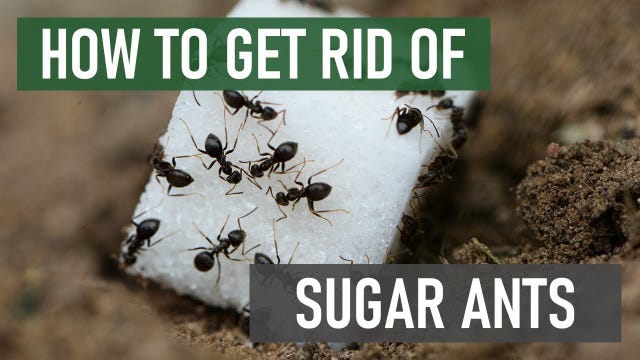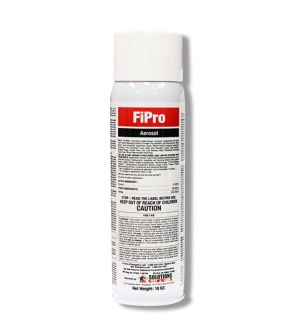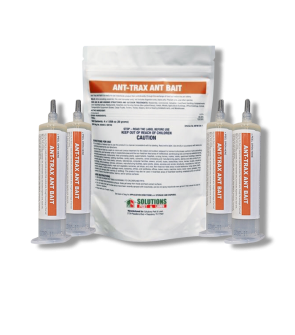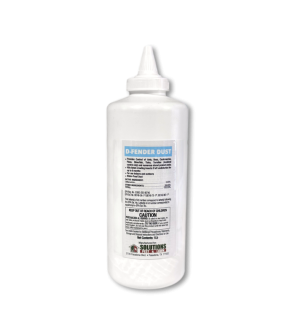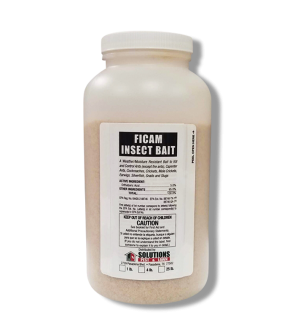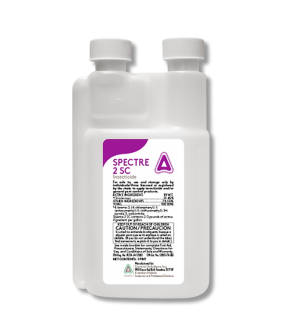Gain access to personalized product screening, the best pricing, rewards, and more!
Most Effective Products
Common Sugar Ants: How to Get Rid of Sugar Ants
This page is a general DIY control guide for various ants, considered sugar ants, that invade and around your home. Follow this guide and the attached links to learn more about these sugar ants and how to kill and control them completely with our recommended steps and products.
Sugar ants are usually a problem during the spring and summer months. They make their way into homes through small cracks, crevices, and voids that most homeowners are not aware of. When these ants do make their way into your home, they quickly overtake areas used for storage of food and water, like kitchens. Sugar ants are often drawn to your property by detecting sweet aromas from food and liquids, hence their nickname.
Ant species, most commonly referred to as sugar ants, are called argentine ants, carpenter ants, odorous house ants, pavement ants, and pharaoh ants. These sugar ants are most encountered indoors within the walls and around the piping of homes throughout the United States. Other sugar ant species, such as acrobat ants, little black ants, and rover ants, are usually found outdoors in colonies within the ground under stones, fallen debris, and near trash cans. Each of these species has large colonies with one or multiple queens.
Though sugar ants are not immediately dangerous to homeowners, they are annoying, and numerous pests can be difficult to control. Not all species of sugar ants respond to baits and pesticide material in the same way, so if you know which ant is the problem, you can quickly control the infestation. In this article, you can learn which sugar ant is infesting your home and which control solution will help give you the highest chances of elimination.
What is a Sugar Ant?
There are more than a thousand different species of ants in the world, but only a portion feed on sugar or sugar-like foods.
The term sugar ant in the United States is a colloquial term used to describe several species of ants that are attracted to or feed on sweet objects.
The real sugar ant, also known as the banded sugar ant, is a native ant species in Australia and is not found here in the United States.
Types of Sugar Ants
The following pictures and descriptions can help you identify some common sugar ant species in the United States. Once you know the species of sugar ants in or outside of your home, you can determine where they are likely to nest, what damages they cause, and what methods of control measures are most effective for that species.
Argentine Ant
Argentine ants are approximately 1/8 of an inch or 3.5 mm long and light to dark brown. Unlike other ant species, they have no stinger and are known to protect themselves and their large colonies against intruders with several bites if provoked.
During the summer, nests are located in soil and are usually very shallow. Though they do not nest indoors, they are found in moist areas like indoor pipes, sinks, and electrical fixtures.
In addition to being a household pest, this ant destroys outdoor vegetation by feeding on honeydew, which is execrated by aphids.
First, prevent and control argentine ants traveling to your home by creating a barrier treated with a long-lasting residual insecticide like Supreme IT. Apply 1 fl. oz. of Supreme IT per gallon of water per 1,000 sq. ft.
Spray along the perimeter of your home's foundation, 3 feet up and 3 feet out from the foundation. While spraying, treat the window and door frame, eaves, soffits, garage doors, rain gutters, electrical/plumbing penetrations, and cracks and crevices.
Then, drench any outdoor ant mounds by spraying around the opening of the ant mound. Once this is done, spray the mound itself until completely saturated.
Do not allow contact with treated surfaces by people or pets before the spray has dried.
Carpenter Ant
Carpenter ants are generally large, measuring between 0.25 and 0.75 inches long, and maybe black, brown, red, yellow, orange, or a combination of red and black. They are omnivorous pests that feed on meat, pet food, honeydew produced by aphids, and other sweet-like products found indoors, like jelly or honey, hence their association with the term sugar ants.
Though carpenter ants are avid eaters, they do not consume wood. In warmer climates, a carpenter ant colony is active all year round and typically creates two colony sites: a parent nest (which contains workers, eggs, and a queen) and a satellite nest (which contains larvae, pupae, and workers).
The parent nest is usually outside within woody areas that hold moisture, like fences, trees, firewood, window and door frames, and other wooden structures. It will be near moist areas such as decaying wood, attic beams, foam insulation, and around tubs and sinks if found indoors. Satellite nests can be found indoors and outdoors around dry areas such as insulation, wall voids, and other decaying wooden surfaces. Normally, the satellite nests are not very far from the parent nest, as workers need to carry the larvae to mature in these sites.
The worker ants, which usually emerge at night, tunnel through hollow wood, leaving behind smooth-sided galleries with chewed wood particles, feces, and other debris outside near these tunnel entrances. Though not immediate, carpenter ants cause structural damage to your home depending on the size of the nests and pests. If left untreated, carpenter ants spread their nests and tunnel activities throughout your property, increasing damage.
Since there could be multiple parent and satellite nests throughout your property, you will want to apply bait inside and outside your home. We recommend using Ficam Insect Bait as carpenter ants will confuse the material for food, thus carrying it back to the colony for complete elimination. With a handheld duster, apply Ficam Insect Bait at a rate of 2 lbs. of product per 1,000 sq. ft. or 3.2 oz. (2/3 cup) per 100 sq. ft. Next, treat cracks and crevices around your home with FiPro Foaming Aerosol to increase contact with pests. Lastly, treat the outside perimeter of your home with Supreme IT at 1 fl. oz. of product per gallon of water per 1,000 sq. ft.
Odorous House Ant
Odorous house ants are small brown to black ants that grow up to 1/8 of an inch in length and earn their reputation by releasing a foul coconut odor when crushed or threatened. While they feed on various items throughout your home, they prefer foods high in sugar, like cookies or other wrapped or unwrapped food. Commonly, they feed on outdoor sugar sources like honeydew, which is created by aphids.
They comfortably live in outdoor nests underneath yard debris and general clutter, but they can also be found inside near moist sites like under sinks and in the kitchen under appliances. In spring to summer, odorous house ants establish trails for finding nests and reliable food sources. The longer an infestation continues, the greater these trails and the abundance of nests along it will be.
First, applications around the perimeter of your home with a long-residual insecticide like Supreme IT help to deter and eliminate foragers from establishing trails. Apply Supreme IT at 1 fl. oz. of product per gallon of water per 1,000 sq. ft. Once the outside of your home is treated, you will make a broadcast application of this product across your lawn. Odorous house ants that have made their way into your home can be taken care of with applications of D-Fender Dust. With a handheld duster, apply D-Fender Dust to indoor cracks and crevices like under sinks, along baseboards, and where the plumbing penetrates the wall.
Since odorous house ants crave sugar, you must apply a gel bait such as Ant-Trax Ant Bait. This material mimics sweets that odorous house ants feed on, encouraging the pests to take them back to their nests and feed on them, causing the entire colony to perish. Wipe down application surfaces with a warm wet rag to decrease competing food surfaces and increase the chances of the pest feeding on the bait material.
Place a pea-sized drop where you have noticed ant activity, but ensure it is at least one foot apart from each application site. This product can be used on countertops, kitchens, bathrooms, appliances, baseboards, and entry points like cracks and crevices in window and door frames. Allow at least 7 to 10 days for the odorous house ant to consume the bait material.
Pavement Ant
Pavement ants are small ants measuring about 1/8 inches long. They range between black and brown in coloration. Usually, their legs are lighter than their bodies. These ants also have grooves on their heads and thorax. Pavement ants are pests that leave trails to food sources like dead insects, seeds, greasy foods, fruits, bread, meats, cheese, and honeydew made by aphids.
These ants are territorial and will protect their colonies through multiple stings if they feel threatened. Their nests are created in various areas, such as cracks and crevices in pavement, driveways, sidewalks, and curbs. These nests may also be found underneath rocks, logs, and other yard debris, along your home's foundation, indoors near wall voids, and underneath the carpet. They may also spread underneath wood or along your home's foundation.
They may become numerous in a short period of time, making them a nuisance for homeowners when they search indoors for food. Pavement ant nests can be difficult to locate since they can hide in the smallest of crevices. For this reason, direct control with outdoor perimeter applications, use of baits, and treatments of cracks and crevices with dust will help to eliminate scavenging workers and their colonies.
Use a long-lasting residual such as Supreme IT along your home's exterior foundation and treat the window and door frames, eaves, soffits, garage doors, electrical/plumbing penetrations, and cracks and crevices. You will also need to perform a spot application where you have noticed pavement ant activities such as on pavement, sidewalk, driveway, patio, and landscape beds. Apply 0.5 to 1.0 fl. oz. of Supreme IT per gallon of water per 1,000 sq. ft.
Treat indoor cracks and crevices, countertops, window frames, baseboards, and nearby appliances with pea-size drops of Ant-Trax Ant Bait. Separate each placement by one foot. For voids, cracks, crevices, and entry points, apply D-Fender Dust with a handheld duster.
Pharaoh Ant
Pharaoh ants are small, at 1/16 of an inch long, and yellow to light reddish-brown in color with a dark-colored abdomen. Like odorous house ants, they release a foul odor, with the exception that it has a urine-like smell when crushed or squeezed. They are opportunistic feeders, consuming various items such as syrups, fruits, meats, and dead insects in swarms.
They nest almost anywhere that is protected by warm and moist conditions, such as cracks and crevices, underneath sinks where plumbing connects with the wall, wall voids, electrical outlets, ceilings, and floors. Outside, pharaoh ants can sometimes be found nesting underneath flat stone surfaces like rocks and bricks, near pavements, and in shaded areas like logs, woodpiles, and the foundation of homes. Indoors can be found in moist areas, like cracks and crevices underneath sinks.
Most of the time, pharaoh ants are found inside your home, traveling through plumbing and electrical outlets. First, bait inside your home with Ant-Trax Ant Bait. Apply a pea-size drop, separated by one foot between each placement. Place this product on countertops against the wall, in kitchens, in bathrooms, near appliances and baseboards, in entry points, and close to previously infested food and water sources.
Residual insecticides are useless when controlling pharaoh ants because colonies tend to split. Treat the perimeter of your home with a non-repellent insecticide like Spectre 2 SC to eliminate any pharaoh ants nesting outside. Spectre 2 SC can be applied at 1.5 to 3.0 fl. oz. of product per gallon of water per 1,000 sq. ft.
Spray 3 feet up and 3 feet from your home's exterior foundation. While spraying, treat the window and door frames, eaves, soffits, garage doors, electrical/plumbing penetrations, and cracks and crevices.
Rover Ant
A rover ant is not known to be aggressive. In fact, they lack a stinger and usually avoid biting. These reddish-brown pests are very tiny, measuring between 1 and 3 mm. Unlike other ant species, the rover ant can easily be identified by its 9-segmented antennae, whereas other pests have 12 segments.
Rover ants devour mostly sugars, such as honeydew made by aphids or scales, tree sap, and plant nectar, but they can switch to eating more protein-based foods like insects during late summer to fall.
They typically favor the outdoors for their nests, especially in trunks of rotting trees, loose tree bark, and soil. If condensation buildup occurs, they will invade potted plants and other areas where moisture collects, like cracks and crevices, near water heaters, and attics and basements.
Though rover ants won't sting or bite, they can become irritating with their large populations and foraging activities. Like most ants, rover ants leave trails for other colony members to follow to a dependable food and water source.
To combat rover ants around your home, you must create a perimeter barrier with Supreme IT. Apply 1 fl. oz. of Supreme IT per gallon of water per 1,000 sq. ft. of your home's exterior foundation. Spray 3 feet up and 3 feet out from your home's foundation. While spraying around the outside of your home's foundation, spray the window and door frames, eaves, soffits, electrical/plumbing penetrations, and cracks and crevices.
To get rid of rover ants inside your home, wipe off countertops with a warm, wet rag to clean up any crumbs or liquid food spills. Once these competing food sources have been removed, you can apply Ant-Trax Ant Bait. Place a pea-size product drop in labeled areas where rover ants have been found. Make sure each placement is at least 1 foot apart from each other. Apply the product to countertops, appliances, baseboards, cracks, and crevices.
Lastly, treat cracks and crevices in and around your home with FiPro Foaming Aerosol. Insert the product material where rover ants have been most active, such as under sinks; plumbing meets the wall, and window and door frames.
Acrobat Ants
Acrobat ants are predatory pests measuring up to 3.2 millimeters in length, mostly feeding on live and dead insects. Still, they will also feed on honeydew made by aphids and mealybugs and other sweets and proteins found in homes. Their large, heart-shaped abdomen most recognize these light red, brown, or black colored ants. When threatened, they raise their abdomen in defense, earning their nickname. If provoked enough, these pests will bite their attacker.
Outdoors, acrobat ants build their nests in damp, rotting wood and shaded areas. They can commonly be found in trees, shrubs, wood piles, around homes' foundations, and water meter boxes. However, they can also build their nests indoors near electrical wiring, bathrooms, kitchens, attics, and areas of homes with constructed wood, such as the bathroom or kitchen.
As previously mentioned, acrobat ants eat other insects, so we recommend using a broad-spectrum insecticide like Supreme IT. Supreme IT is a long-lasting residual insecticide labeled to treat ants and 70 other types of insects. Once applied, this product continues to fight against rover ants and pests for up to 90 days. Apply 0.5 to 1.0 fl. oz. of Supreme IT per gallon of water per 1,000 sq. ft. along the exterior of your home's foundation.
Spray 3 feet up and 3 feet from your home's foundation while spraying the door and window frames, eaves, soffits, garage doors, electrical/plumbing penetrations, and cracks and crevices.
Additionally, treat voids around the outside of your home with D-Fender Dust. With your selected handheld duster, puff the product in hard-to-reach areas. Indoors, you will apply Ant-Trax Ant Bait as pea-size drops on countertops, near window frames, in cracks and crevices, near baseboards, and close to appliances. Make sure that each bait placement is spaced at least 1 foot apart from each other.
Little Black Ants
As their name suggests, little black ants are tiny, about 1/16 inch long, and jet-black to dark brown. This ant has a stinger but is too small and weak to use. This pest will feed on grease, oil, meat, fruit, sweets, products made from vegetables such as corn, other insects, and execrated honeydew from aphids and scales.
Little black ants mainly nest outdoors in decaying wood, open lawns, and sidewalk cracks. They also form nests indoors within wall voids, woodwork, cabinets, and rotten wood surfaces. Though they do not cause immediate damage, their large populations and frequent foraging activities can become a nuisance.
Since these pests can create nests indoors and outdoors, it would be best to use a long-residual insecticide like Supreme IT. Perform a perimeter application outside your home to kill and repel pests traveling into your property. Supreme IT can be applied at 1 fl. oz. of product per gallon of water per 1,000 sq. ft. Once your perimeter application is complete, spray your lawn and ornamentals and drench any visible little black ant colonies.
Treat indoor cracks and crevices with D-Fender Dust to kill any little black ants inside your home and interior walls. Apply this product within cracks and crevices, along baseboards, behind electrical outlets, and at points of entry outside your home.
Apply a bait gel such as Ant-Trax Ant Bait on countertops, near appliances and baseboards, window frames, and near entry points. Allow 7 to 10 days to pass without using cleaning supplies in the treatment area to increase pest contact with the lethal bait material. Little black ants will carry this material back to other colony members, thus completely eliminating the entire colony in hard-to-reach areas.
Key Takeaways
Where do Sugar Ants Live?
- Depending on the pest, sugar ants can live inside and outside your home. Indoor nest sites are commonly within sheltered, protected areas such as underneath sinks, where electrical/plumbing meets the wall, and wall voids. Outdoor nest sites will range from moist, decaying wood sites in soil or underneath yard debris.
What Attracts Sugar Ants to Your Home
- Sugar ants are often attracted to sugary and high-protein foods, such as saps and honeydew, made by other insects.
How Sugar Ants Get Inside Homes
- With their small size, sugar ants can invade homes through the smallest crack, crevices, and voids around your window frame, door frame, home foundation, and exterior plumbing.






